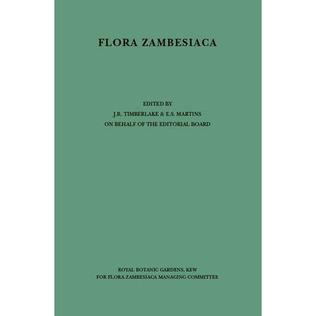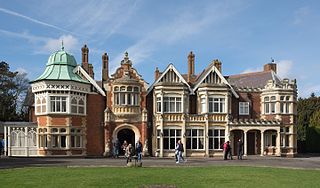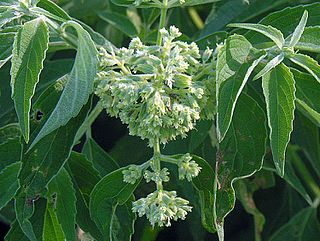
Flora Zambesiaca is an ongoing botanical project aimed at achieving a full account of the flowering plants and ferns of the Zambezi River basin covering Zambia, Malawi, Mozambique, Zimbabwe, Botswana and the Caprivi Strip, and is published by the Royal Botanic Gardens, Kew. The work is published in parts or whole volumes as and when the relevant families are completed, and is currently (2012) over the halfway mark. Some 24 500 plant species have been described so far. [1]

Zambia, officially the Republic of Zambia, is a landlocked country in south-central Africa. It neighbours the Democratic Republic of the Congo to the north, Tanzania to the north-east, Malawi to the east, Mozambique to the southeast, Zimbabwe and Botswana to the south, Namibia to the southwest, and Angola to the west. The capital city is Lusaka, located in the south-central part of Zambia. The population is concentrated mainly around Lusaka in the south and the Copperbelt Province to the northwest, the core economic hubs of the country.

Malawi, officially the Republic of Malawi, is a landlocked country in southeast Africa that was formerly known as Nyasaland. It is bordered by Zambia to the northwest, Tanzania to the northeast, and Mozambique on the east, south and west. Malawi is over 118,000 km2 (45,560 sq mi) with an estimated population of 18,091,575. Lake Malawi takes up about a third of Malawi's area. Its capital is Lilongwe, which is also Malawi's largest city; the second largest is Blantyre, the third is Mzuzu and the fourth largest is its old capital Zomba. The name Malawi comes from the Maravi, an old name of the Nyanja people that inhabit the area. The country is also nicknamed "The Warm Heart of Africa" because of the friendliness of the people.

Mozambique, officially the Republic of Mozambique, is a country located in Southeast Africa bordered by the Indian Ocean to the east, Tanzania to the north, Malawi and Zambia to the northwest, Zimbabwe to the west, and Eswatini (Swaziland) and South Africa to the southwest. The sovereign state is separated from the Comoros, Mayotte and Madagascar by the Mozambique Channel to the east. The capital of Mozambique is Maputo while Matola is the largest city, being a suburb of Maputo.
The majority of the line illustration plates in the first volume were by Miss L. M. Ripley and Miss G. W. Dalby. [2]
The Flora Zambesiaca project was set in motion in 1950 by Arthur Wallis Exell when he returned to the British Museum from his wartime activities with the Government Communications Headquarters at Bletchley Park - he was co-editor of Flora Zambesiaca from 1962 onwards. The present survey is under the editorship of Jonathan Timberlake who works in the Herbarium at the Royal Botanic Gardens, Kew. [3]

Arthur Wallis Exell OBE was initially an assistant and later Deputy Keeper of Botany at the British Museum during the years 1924–1939 and 1950–1962. A noted cryptographer, taxonomist and phytogeographer, he was notable for his furthering of botanical exploration in tropical and sub-tropical Africa, and was an authority on the family Combretaceae.

The British Museum, in the Bloomsbury area of London, United Kingdom, is a public institution dedicated to human history, art and culture. Its permanent collection of some eight million works is among the largest and most comprehensive in existence, having been widely sourced during the era of the British Empire. It documents the story of human culture from its beginnings to the present. It was the first public national museum in the world.

Bletchley Park is a nineteenth-century mansion and estate near Milton Keynes in Buckinghamshire, constructed during the years following 1883 for the English financier and politician Sir Herbert Samuel Leon in the Victorian Gothic, Tudor, and Dutch Baroque styles, on the site of older buildings of the same name. It has received latter-day fame as the central site for British codebreakers during World War II, although at the time of their operation this fact was a closely guarded secret. During the Second World War, the estate housed the British Government Code and Cypher School (GC&CS), which regularly penetrated the secret communications of the Axis Powers – most importantly the German Enigma and Lorenz ciphers; among its most notable early personnel the GC&CS team of codebreakers included Alan Turing, Gordon Welchman, Hugh Alexander and Stuart Milner-Barry.








